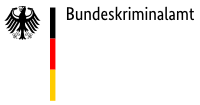
 Cotton wool fibre seen through the microscope
Cotton wool fibre seen through the microscope
Microscopic traces of textile materials often play an important role in the solution of homicide cases. Single-fibre fragments often appear as classical contact traces, especially in crimes against persons such as robbery, assault, rape and murder. Because fibre fragments are not visible to the naked eye, various methods involving the use of light microscopy (e.g. bright field and fluorescence microscopy) are used in the non-destructive analysis of fibre types and fibre morphology, of material condition and fibre dyes.
 UV/VIS microspectral photometer for the measurement of dye spectra
UV/VIS microspectral photometer for the measurement of dye spectra
Microspectral photometry within the ultraviolet and visible ranges of the electromagnetic spectrum is commonly used to classify fibre dyes. The first generation of the microspectral photometer now in use in forensic analysis the world over was developed by the KTI in collaboration with one of the leading microscope manufacturers in Germany.
 Textile label recovered from the remains of a woman’s panties
Textile label recovered from the remains of a woman’s panties
Forensic expertise in the analysis of textile labels is also regarded as innovative and highly effective. On the basis of label data, information pertaining to production and marketing time frames, regional sales territories and quantities produced by textile manufacturers with the aid of an information network. These findings not only help to identify previously unidentified homicide victims but also enable analysts to determine the age of textile materials. In one case, for example, experts were able to determine the approximate time a corpse lay at the discovery site as one year or less on the basis of the only available assessable evidence – a clothing label. The KTI offers label analysis as a central service for all homicide departments and missing persons offices in Germany and Europe.
